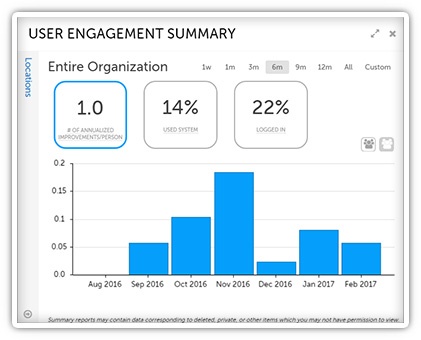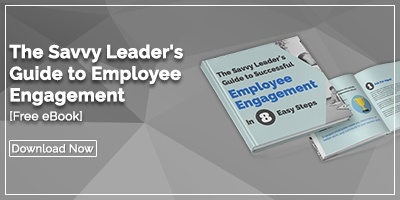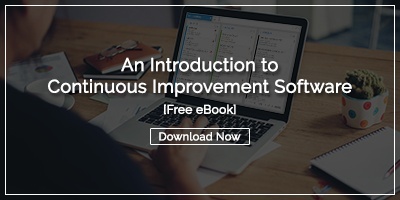 These days, most of us operate on tight budgets with limited bandwidth. Leaders have many competing priorities, and it can be a challenge to take on anything new. But what if one new initiative could make everything else that's happening more effective? Would it be worth investing resources if a new technology could boost productivity and transform the culture?
These days, most of us operate on tight budgets with limited bandwidth. Leaders have many competing priorities, and it can be a challenge to take on anything new. But what if one new initiative could make everything else that's happening more effective? Would it be worth investing resources if a new technology could boost productivity and transform the culture?
Employee engagement software just might be that thing for your organization. Let's dig into the reasons employee engagement is so critical and why so many organizations have implemented technology to improve it.
What is Employee Engagement?
Many people use the terms "employee engagement" and "employee satisfaction" interchangeably, but they are not the same.
Employee satisfaction is about how happy people are with their jobs. According to a Gallop study, the top five satisfaction factors are:
- A respectful treatment of all employees at all levels
- Competitive compensation
- Competitive benefits
- Job security
- Trust between employees and senior management
Employee satisfaction addresses how people feel, it's an essential element of retention, of course, but it has little to do with the productivity of the organization.
Employee engagement, on the other hand, is about what people do. It is a measure of their emotional connection to the organization. The top five engagement factors are:
- Employees feel confident they can meet their work goals
- Employees are determined to meet their work goals
- Employees have a clear understanding of their organization's mission and vision
- Employees have good relationships with coworkers
- Employees have opportunities to use their skills and abilities
Looking at these two lists, it is easy to see how an employee could be completely satisfied but utterly disengaged.
Here's why that matters.
The Impact of Engagement
Gallup researchers studied the differences in performance between engaged and actively disengaged work units. They found that those scoring in the top half on employee engagement nearly doubled their odds of success compared with those in the bottom half.
Highly engaged organizations experienced:
- 22% higher profitability
- 21% higher productivity
- 10% better customer ratings
- Lower turnover (25% in high-turnover organizations, 65% in low-turnover organizations)
- 28% less shrinkage
- 37% less absenteeism
- 48% fewer safety incidents
- 41% fewer quality defects
It's pretty amazing that there's one factor that can move the lever that much on all of those critical business metrics.
The Elephant in the Room
Given the power of employee engagement, you'd think it would be a top priority for leaders. The data, however, does not bear that out. Gallup found that 85% of employees are not fully engaged in the workplace.
Gulp.
Does that mean that leaders just don't care about employee engagement or that it isn't something they can address?
Our customers don't think so. Improving employee engagement is tough work because it requires changing the way people think about their work on a daily basis. That's why so many "employee engagement programs" fail. Short-term projects, temporary rewards, bonuses, and the like don't give employees reasons to expend discretionary effort over the long hall.
How Software Helps
Employee engagement software that is designed to support employees' efforts to improve the workplace is exactly what's needed to get more emotional commitment from each worker. Let's look at how it addresses each of the five critical factors we outlined earlier.
 Employees feel confident they can meet their work goals – Employee engagement software gives people some degree of control over their work. If there are obstacles that prevent them from reaching their goals, they are encouraged and empowered to bring them to light.
Employees feel confident they can meet their work goals – Employee engagement software gives people some degree of control over their work. If there are obstacles that prevent them from reaching their goals, they are encouraged and empowered to bring them to light.
Employees are determined to meet their work goals – How do people become committed to achieving their goals? They have a hand in crafting those goals and confidence that when they are successful, they will be recognized for their efforts. Employee engagement software with improvement broadcasting builds appreciation into the process.
Employees have a clear understanding of their organization's mission and vision – People need to understand how they fit into the bigger picture and how their work is essential to the future of the organization. With engagement software, you can cascade goals down from the highest level to each person, so priorities are aligned, and everyone is working toward the same ends.
Employees have good relationships with coworkers – While there's obviously more to this than software, a solution that makes cross-functional collaboration seamless can go a long way toward bridging silos and resolving conflicts.
Employees have opportunities to use their skills and abilities – And here's the biggie. With employee engagement software, you allow people to engage beyond just operating the process that they work. They have the opportunity to flex their project management, critical thinking, problem-solving, and leadership muscles. You're no longer just asking them to perform their function; you're allowing them to transform it.
Implementing employee engagement software requires a financial and cultural investment, but there really isn't much else that has the potential to impact an organization in such a profound way.




Add a Comment